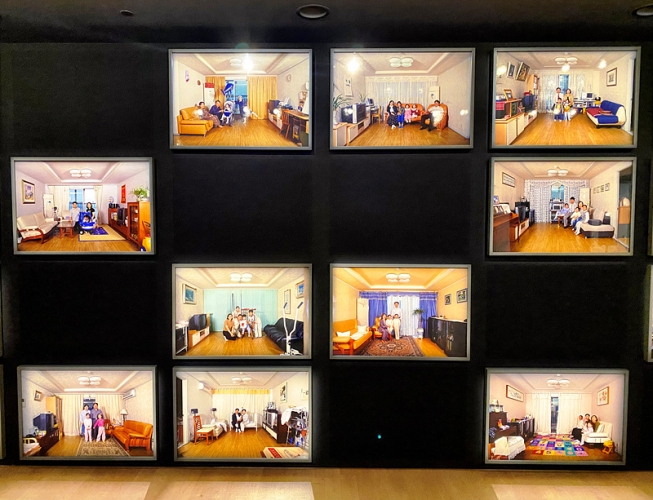December 2025
Haegue Yang Unveils Large-Scale Commission for the Inauguration of Taichung Art Museum
Haegue Yang presents Liquid Votive – Tree Shade Triad (2025, hereafter Liquid Votive) as the inaugural commission for the TcAM Art Commission at the newly-opened Taichung Art Museum within the Taichung Green Museumbrary, Taiwan. Marking the artist’s first major commission in Taiwan and the largest blind installation in her practice to date, the work occupies the museum’s 27-meter-high lobby, suspended from the ceiling in the form of a monumental “cosmic tree.”
For more than two decades, Venetian blinds have served as one of Yang’s core sculptural languages, expanding into performative sculptures and multisensory installations. Through the transformation of an everyday material, the blinds function as mediators of light, transparency, and spatial depth, cultivating an experimental vocabulary that articulates the relationship between movement and perception.
Drawing inspiration from sacred tree traditions in Korea, Taiwan, and other cultural contexts, Liquid Votive expands the imagery of the venerable tree as a site of communal connection and pays homage to spiritual beliefs rooted in nature across regions. Departing from the typical notion of a tree grounded in the earth, the work takes the form of an inverted tree suspended from above. Installed at the center of the museum’s soaring atrium, the structure appears to float midair, rising along the surrounding spiral ramp. The LED lighting and laser beams that animate the work at night are reminiscent of fireflies, imbuing the piece with a sense of vitality. Positioned at the heart of the new institution, the piece activates the space while embodying aspirations for collective cohesion and spiritual resonance.
Yi-Hsin Lai, director of the Taichung Art Museum, remarks, “Haegue Yang is the ideal artist to illuminate the relationship between artwork and architectural space. Her work engages not only with the elegant interior ramp but also with the museum’s natural and cultural values, offering visitors a distinctive artistic and sensory experience.” The work will remain on view for the next two years.
For more than two decades, Venetian blinds have served as one of Yang’s core sculptural languages, expanding into performative sculptures and multisensory installations. Through the transformation of an everyday material, the blinds function as mediators of light, transparency, and spatial depth, cultivating an experimental vocabulary that articulates the relationship between movement and perception.
Drawing inspiration from sacred tree traditions in Korea, Taiwan, and other cultural contexts, Liquid Votive expands the imagery of the venerable tree as a site of communal connection and pays homage to spiritual beliefs rooted in nature across regions. Departing from the typical notion of a tree grounded in the earth, the work takes the form of an inverted tree suspended from above. Installed at the center of the museum’s soaring atrium, the structure appears to float midair, rising along the surrounding spiral ramp. The LED lighting and laser beams that animate the work at night are reminiscent of fireflies, imbuing the piece with a sense of vitality. Positioned at the heart of the new institution, the piece activates the space while embodying aspirations for collective cohesion and spiritual resonance.
Yi-Hsin Lai, director of the Taichung Art Museum, remarks, “Haegue Yang is the ideal artist to illuminate the relationship between artwork and architectural space. Her work engages not only with the elegant interior ramp but also with the museum’s natural and cultural values, offering visitors a distinctive artistic and sensory experience.” The work will remain on view for the next two years.









